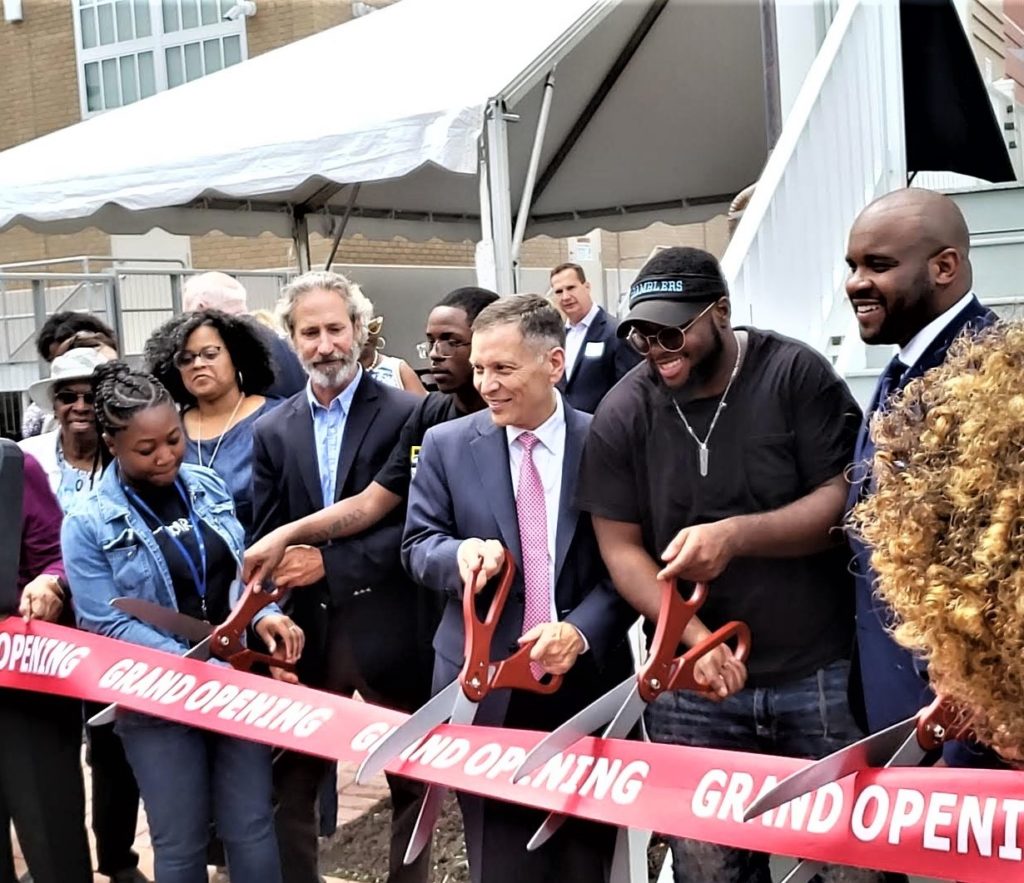By Matt Koehler

The James C. Dent House reopened to a jubilant, if slightly overheated, crowd of community members, local political and religious leaders, stakeholders, and media under warm and sunny skies on Wednesday morning, June 19. Juneteenth to be exact, a date commemorating African American emancipation in 1865, and an auspicious day to reopen a house that belonged to one of Southwest’s most prominent black leaders.
James Clinton Dent was born into slavery in 1855 on a tobacco farm in Maryland. Following emancipation, he eventually made his way to DC and worked as a laborer in a lime kiln. In 1885, Dent’s wife, along with other community members, founded the Mt. Moriah Baptist Church. Not long after its founding, however, the pastor stepped down and Dent stepped up and served as pastor for 22 years. During his tenure as pastor of Mt. Moriah, Dent became a prominent member of the Southwest community and shaped the church into a powerful and influential part of the black community.
In 1906, Dent hired a white architect by the name of William James Palmer, known for his row house designs, to build a new home. According to the now defunct DCmud blog, the structure wasn’t exceptional as a row house but likely stood out amongst the other row houses, tenements, shacks and even tents that populated Buzzard Point at the time. The Dent house is one of the few 19th and early 20th century structures to survive the urban renewal of the 1950’s.
Flash forward several decades; the Dent house was run by the Southwest Community House organization until they lost funding and went into debt in the early 2000’s. In 2010, thanks to some dedicated SW community members, the structure was designated as a historic landmark.
Pepco, located next door, ultimately bought the property and in collaboration with Living Classrooms, a nonprofit founded in Baltimore in 1985, restored the building to be used as a community education and workforce development center.
The new Dent House Center is the first community-based center of its kind in DC and seeks to serve families residing in Ward 6. It’s located near three public housing developments: James Creek, Greenleaf Gardens, and Syphax Gardens, and according to Living Classrooms (LC) the “reopening [of the Dent House] will meet long-standing needs of families living within the 600 residential units.”
Going forward, Michelle Subbiondo of LC says they plan to provide hands-on STEAM (science, technology, engineering, arts, and math) powered and robotics programs for young people. During the ribbon cutting ceremony there was an impressive, fully functional robot that attendees could try out. Furthermore, Subbiondo noted that there is a robotics competition this summer, so look for that in the coming months.
Living Classrooms also plans to offer summer enrichment programs and after school arts and education tutoring in reading and STEAM, in addition to a recording studio where young people can learn how to write and produce their own music.
Living Classrooms, however, is not just for the kids. In the coming weeks and months, they hope to provide workforce development for adults and get community members involved in leadership roles. What specific workforce development and leadership roles will they offer? Subbiondo and a few other representatives from Pepco were not quite sure, yet, as their offerings at the Dent House are an evolving thing. They hope that in coming months, as the community becomes more familiar with the new center, their input will help shape the Dent House’s evolution. “Community involvement is key to making it work,” Subbiondo told me.
For now, they plan to help adults apply for jobs, get through an interview, or even help with how to talk to a boss they might be having problems with.
Unlike other community
centers, the newly reimagined Dent House potentially offers something unique
and useful to an area that has seen some of the most rapid development and
displacement over the years. In a city of rising rents and growing inequality,
they could offer those in our community who need the most help exactly what
they need.
Leaving the ribbon cutting ceremony, I left an atmosphere of good feelings from
all those present who hoped to be a positive influence on the future of the SW
community. And, I recalled the joy on the faces of the community members who
fought to keep this historic property and make it into a force for educational
opportunities and positive change.

